How To Draw Cute Noses
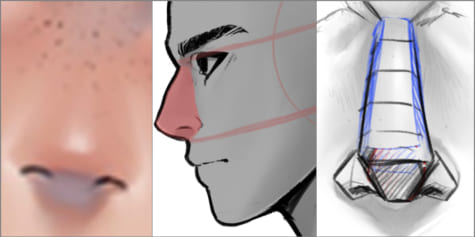
This is a tutorial on how to draw a nose by the illustrator Raquel Arellano. You will learn how noses in any style can be broken down into basic shapes. Understanding it's basic structure will enable you to draw a variety of noses!
In this tutorial, you will learn how to draw a nose from its simplest and most basic shapes. From there, you can see how to make noses even more complex and in different shapes and sizes. One of the objectives is to be able to design a unique, expressive, creative face that has personality.
For this tutorial, I mainly used Clip Studio Paint EX for iPad, although you can adapt all the explanations to other graphic apps such as Procreate, Photoshop, etc.
1. Understanding the nose: Basic structure
Before you start drawing noses in different styles and shapes, it's best to secure your understanding of its basic structure. Once you grasp the basic foundation of something, it greatly helps when recreating it in another drawing style, from realistic to cartoonish. If you follow this order, it will be much easier to draw the nose you need in any situation.
Try to imagine the different basic shapes that make up a nose and break it down. Using flat and rectangular shapes will help you understand it's volume. Below, we have various break downs of the nose, separated by color. For the main structure of the nose, imagine a rectangle that can be narrowed at will as it gets closer to the tip of the nose. Or try to enlarge it a bit more when you are looking for a nose with wider nostrils.
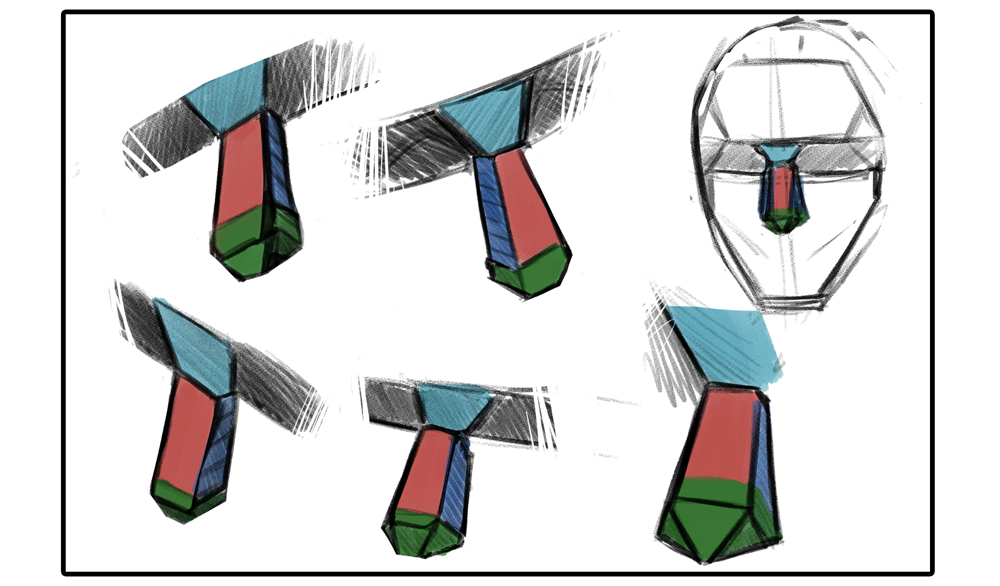
1.1 Understanding the nose: Round shapes
Once you understand the basic
structure of the nose, translate those rectangular and flattened elements into curved and spherical shapes. This will gradually begin to resemble the structure of a real nose.
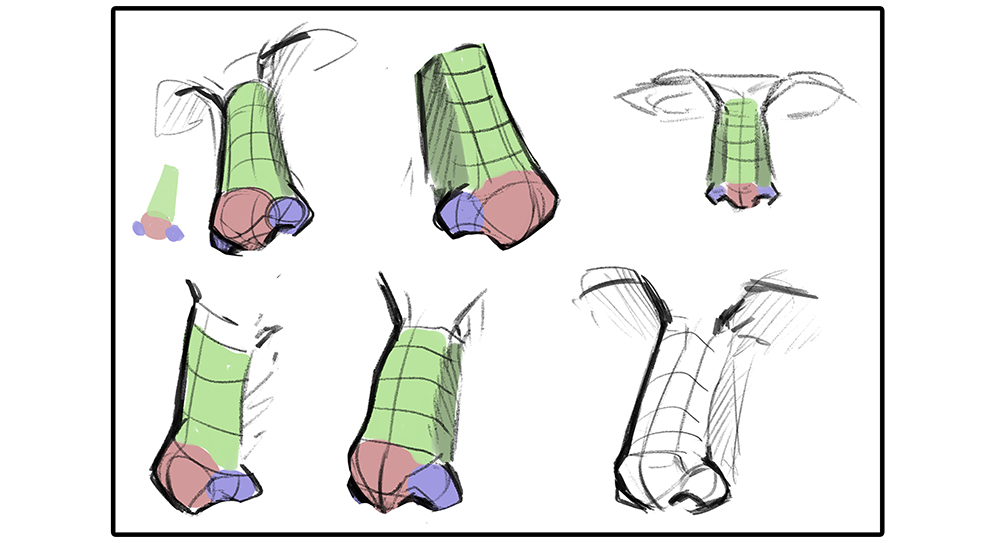
Notice how a nose can be realistically represented. Taking into account the shaded areas helps to understand the volumes. Once you have analyzed these shapes, try to blend them together. Use references, photographs, etc. for this. You can find tons of reference images on sites likeArtStation orPinterest.
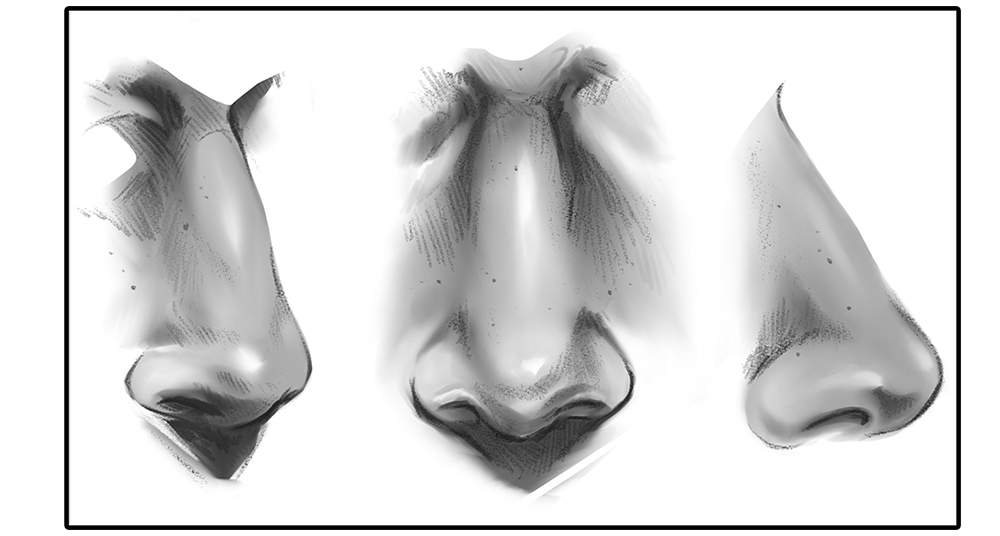
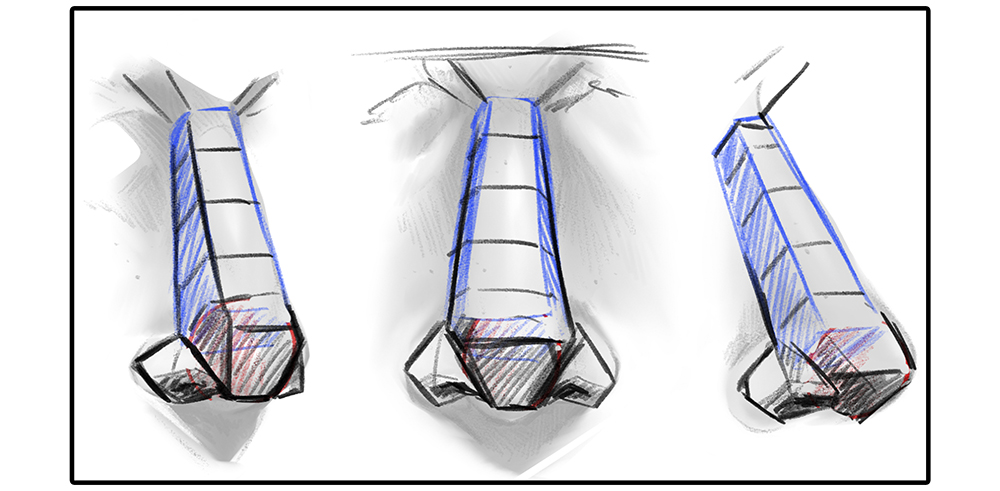
To easily represent the tip of the nose, draw a bigger sphere in the center, with two small ones on the sides. Sizes can vary depending on how you want the nose to look and feel free to add a rectangular structure to better understand each side of the nose.
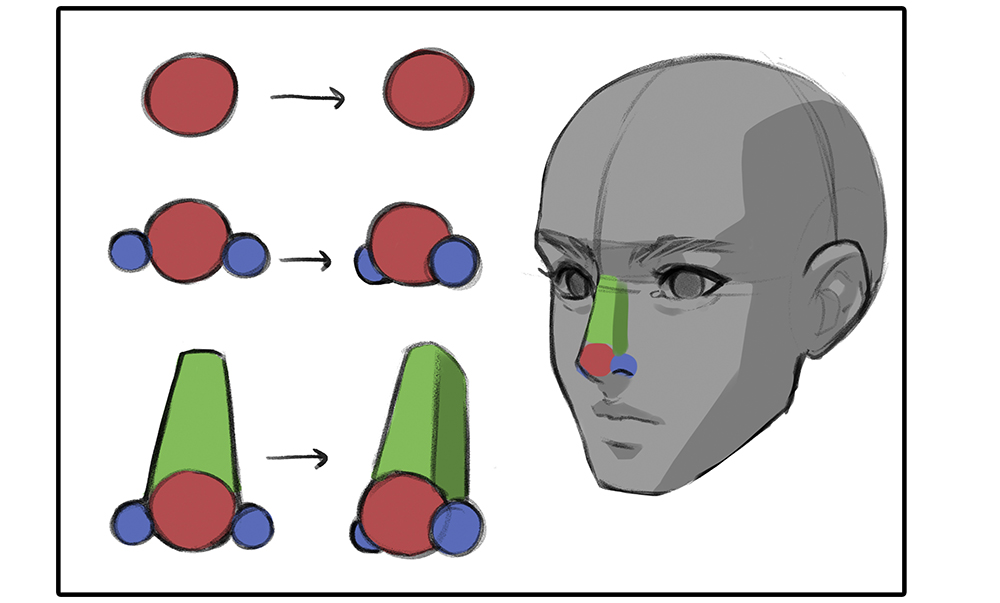
2. Placing the nose
Once we know the basic structure of the nose, let us look at how to fit it into the face. Several aspects and proportions must be taken into account. The size of the nose is in the same vertical guideline that divides the face in two (more or less in half). Its size can also be related to the ears. Many times, if the nose is big, the ears will also be big. To designate where the nostrils fall, we can use the tear duct.
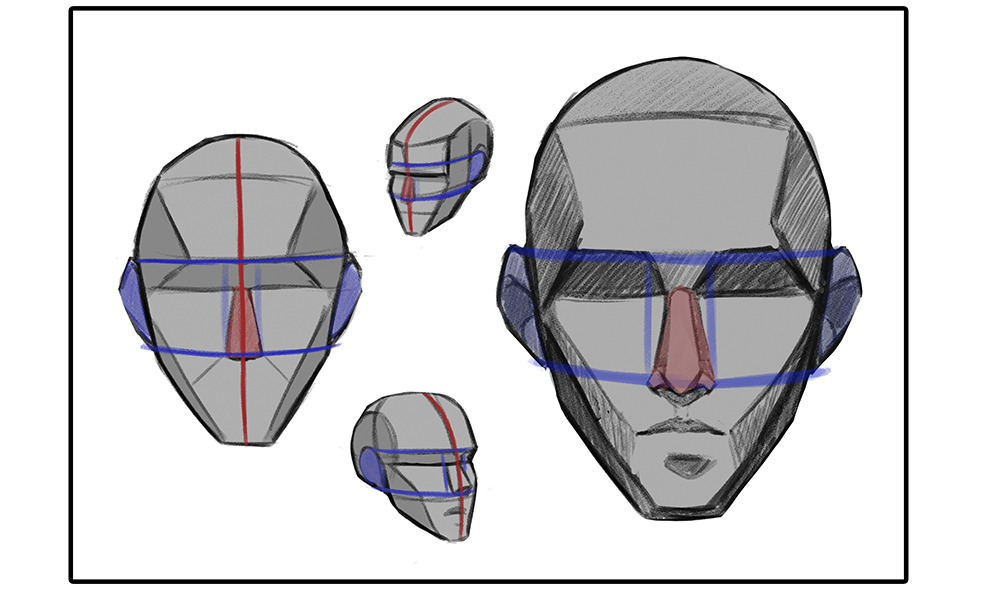
3. Proportions according to biological sex and genre
Once the basic structure of the nose has been fully understood, let us concentrate on how to use the right type of nose for each character. Research and identify different individual features that allow you to see age or sex differences between characters. A typical male nose is different from a female nose in that it usually has a more noticeable septum and larger nostrils. A typical feminine nose would have a thinner septum and smaller nostrils. You can also round or sharpen the tip of the nose to make it a little thinner.
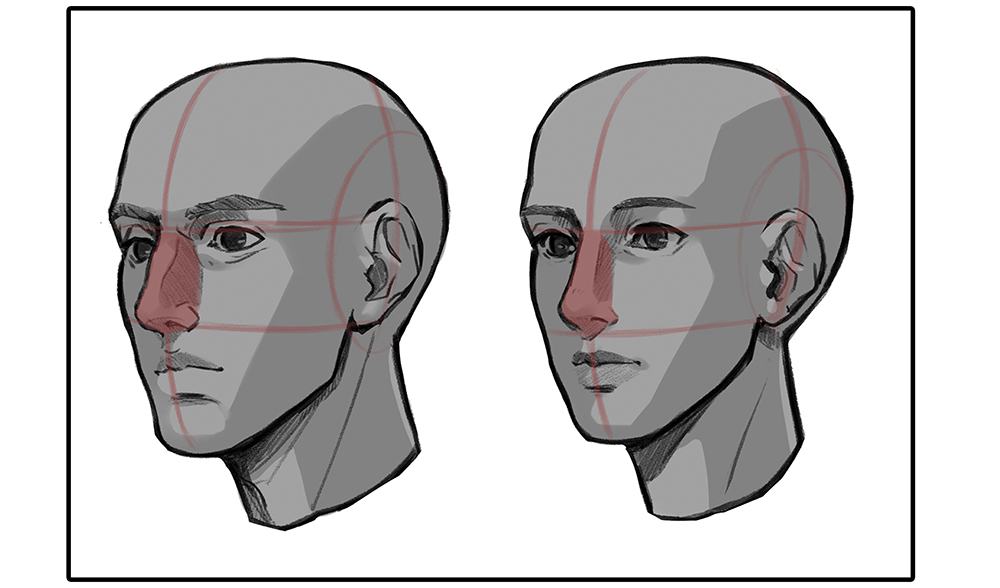
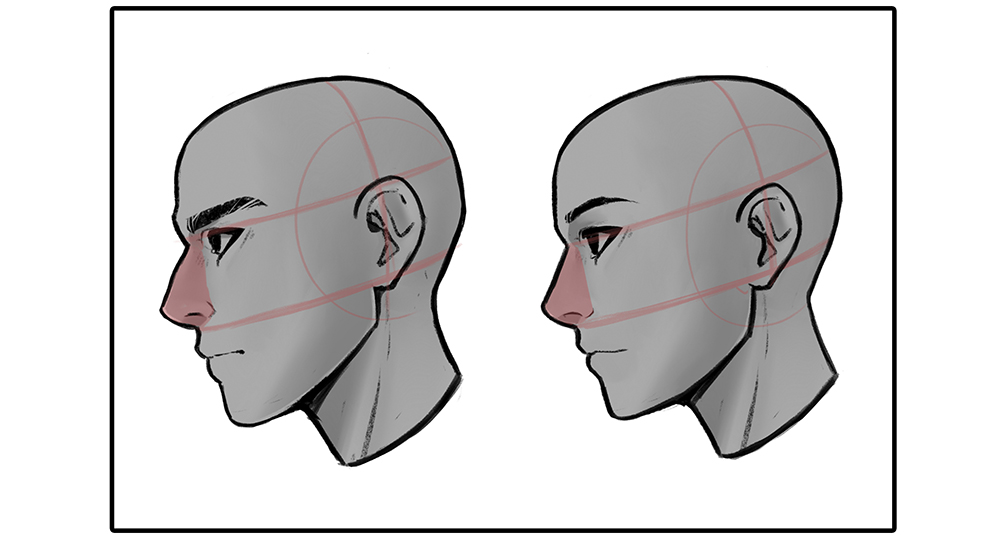
Another aspect to consider is age. As their body is still growing, children's noses are much smaller than those of adults. You can see the same pattern when comparing the nose of an adult to that of an older adult. Look at how an older man's nose is larger and drops down further compared to that of a middle-aged adult.
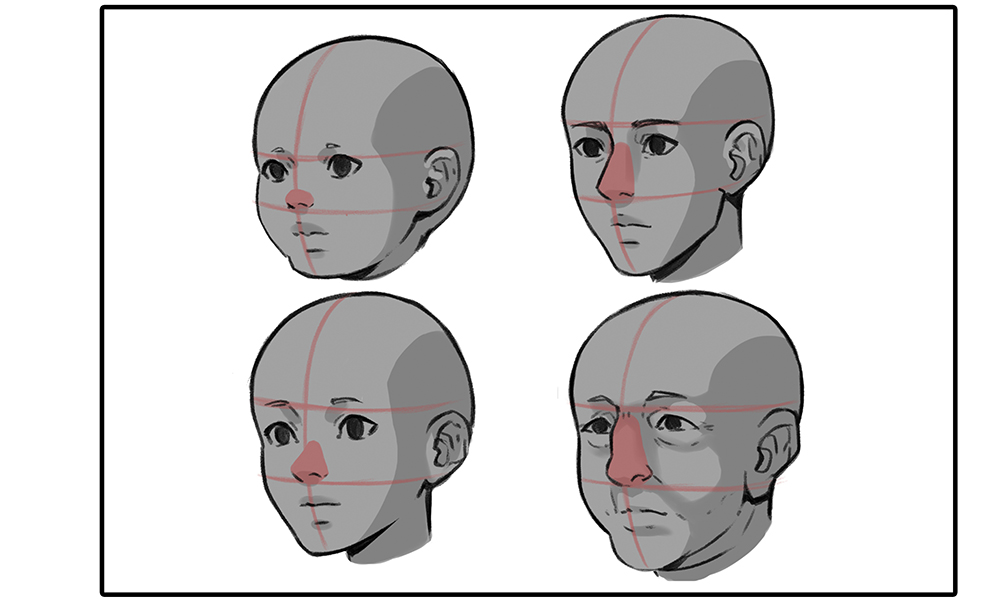
4. Nose types
Depending on the type of nose, the character acquires specific facial features. This helps to make their psychological traits easier to recognize. You can try combining them with facial expressions and other elements too. Traditionally, antagonists are designed bigger noses than protagonists who usually have smaller, thinner noses. Remember that there can be exceptions if we know how to balance this when using other features to define our characters. In the example below, I decided to draw a prominent nose on the three characters on top, and a smaller, sharper nose on the three on the bottom. As I pointed out, the psychology of the character can be closely linked to physical features (such as the nose!), but there is always room for exceptions.
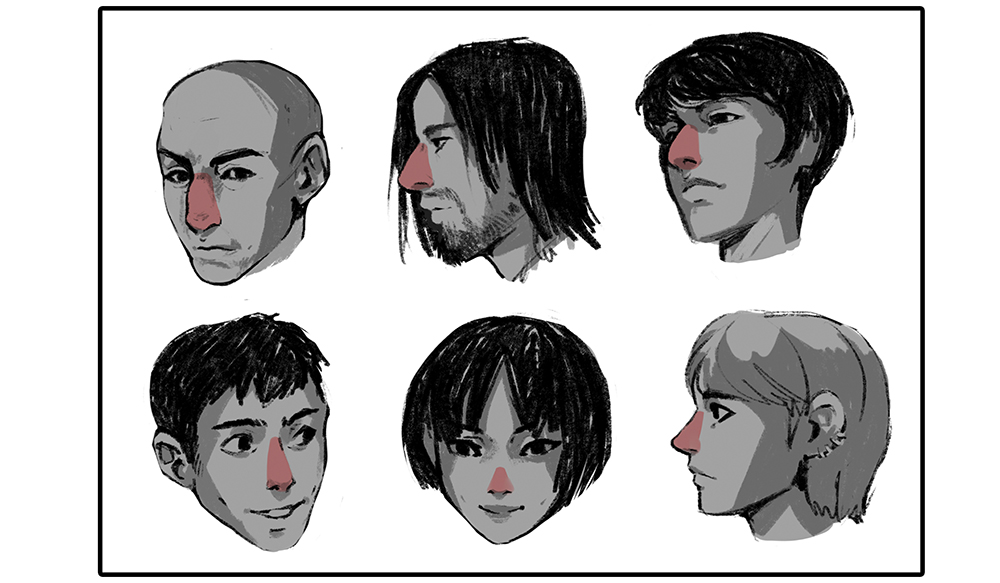
5. Same face, different nose!
When designing a character, it is interesting to make some last-minute changes when deciding the final design. In this case, let me show you an example of how different types of noses work on the same character.
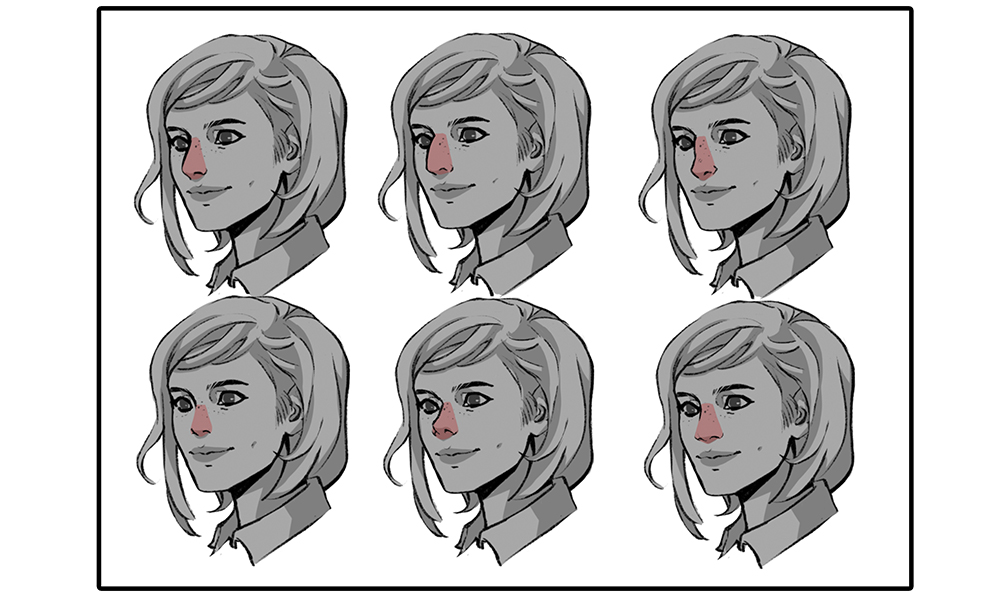
6. Drawing a nose using different styles
Depending on their styles, artists have different takes on noses and represent them in various ways. Here is an example of five different interpretations of a nose. The first one is a simple Manga-style nose, the second is done using a Disney style, the third with an American comic book style, the fourth is my own style (I call it Stylish), and the fifth a more realistic/semi-realistic take on my Stylish nose.
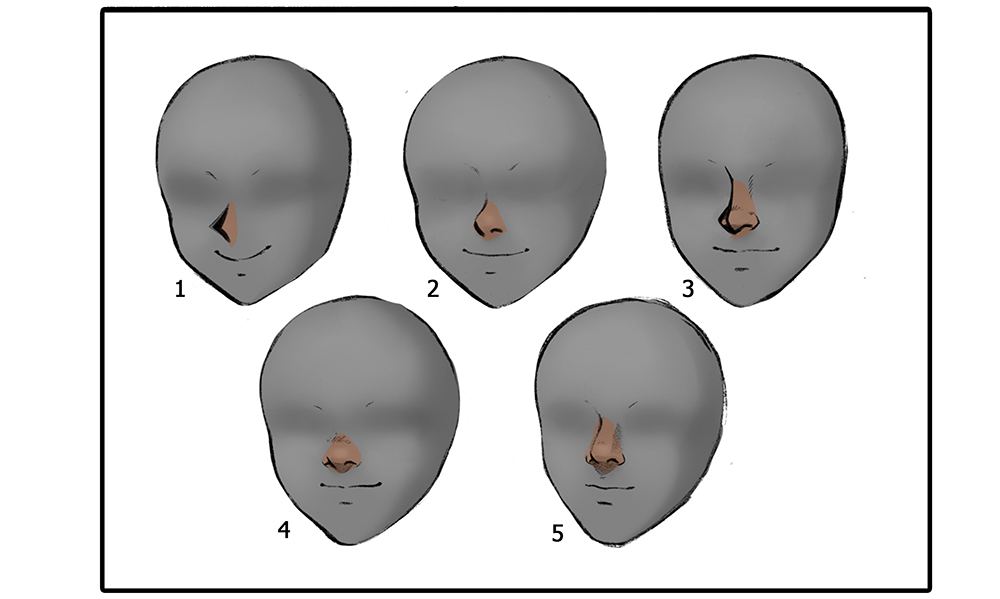
7. Appling noses to an illustration
To finish up the tutorial, let's take a look at this step-by-step illustration so you can see how the nose is put together with the other elements that make up the face. I have drawn a small freckled nose to create some texture to the skin in the nose area. Note how important it is to know where highlights and shades must be placed in order to achieve depth and volume. I always add some shine to the sides of the nostrils and at the tip, while using a darker shadow under the nose. The color of your illustration depends greatly on lighting, in addition to the character themselves. In my image, I used a neutral light source.
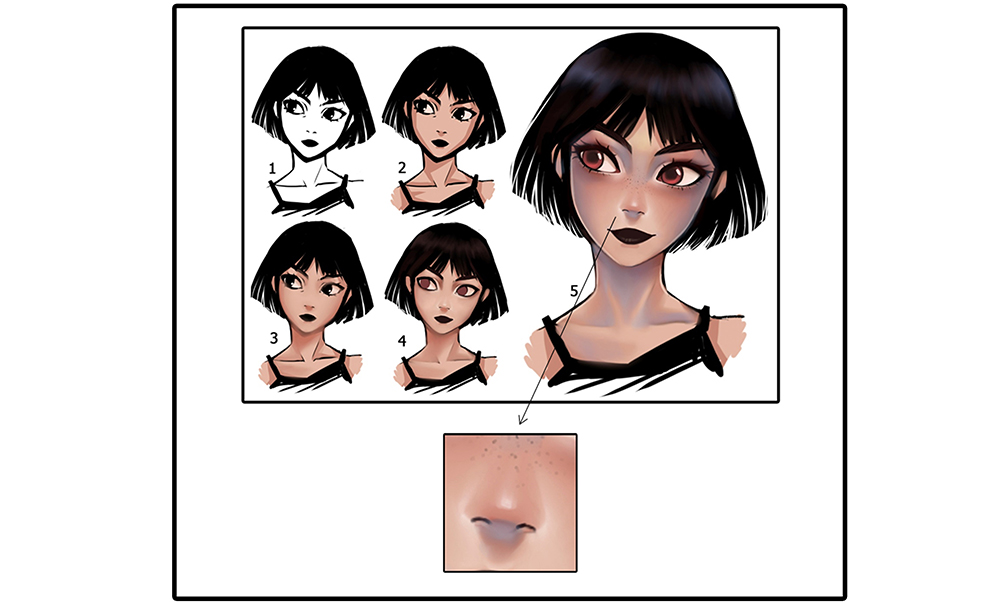
How To Draw Cute Noses
Source: https://www.clipstudio.net/how-to-draw/archives/160376
Posted by: grangerficulaiders.blogspot.com

0 Response to "How To Draw Cute Noses"
Post a Comment